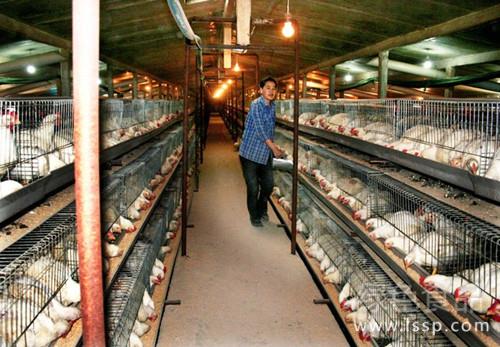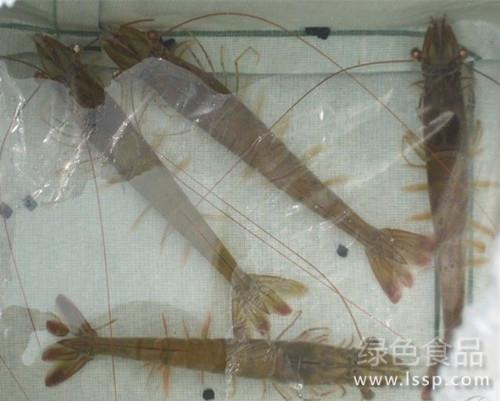The damage of breeding eggs affects the income of raising chickens how to prevent and cure the broken eggs of caged broilers
According to the response of most caged broiler farmers, broiler eggs are easy to be damaged when caged broilers are raised, which seriously affects the income of broilers. It is suggested that the majority of chicken farmers can use the following methods to prevent and cure this problem.

Caged broilers
First, various minerals, vitamins and trace elements in the diet should be up to the standard.
1. Proper amounts of calcium, phosphorus and vitamin D3 were added to the diet to improve the strength of eggshell. The best dietary calcium content for broilers is 3.3%-3.6%. The experimental results showed that the eggshell hardness of breeder chickens fed with large granular bone particles was higher than that of fine bone powder, and the eggshell strength of eggs produced by calcium supplement at 4 pm was stronger than that at 8 pm. It is appropriate to supplement calcium 2 weeks before laying. Early calcium supplementation is easy to cause gout and affect egg production. Phosphorus is related to the elasticity of eggshell. Low phosphorus is good for eggshell quality, but if phosphorus is too low, the imbalance between calcium and phosphorus will not only affect calcium absorption, but also reduce the yield and quality of breeding eggs. The best calcium content in the diet is 0.4%-0.7%. During the laying period, the best ratio of calcium to phosphorus is 4:1. In the case of balanced ratio of calcium and phosphorus, proper vitamin D3 should be added to the diet, generally adding 1000 to 1500 international units of vitamin D3 per kilogram of diet, which can promote the absorption of calcium and phosphorus and improve the quality and quality of breeding eggs.
two。 Proper amount of manganese, zinc, magnesium and other trace elements were added to the diet to improve the quality of eggshell. The contents of manganese, zinc and magnesium in diet were 200ppm, 50ppm and 400ppm, respectively. Low manganese could reduce the specific gravity of eggshell and increase the number of cracked eggs. High magnesium could decrease the feed intake and increase the breakage rate of breeding eggs. Therefore, an appropriate amount of trace elements should be added to the diet. To ensure the qualified rate of breeding eggs.
Second, start with breeding chickens to improve the qualified rate of breeding eggs.
1. Do a good job in epidemic prevention and disease control in time to improve the qualified rate of eggs. Some diseases, such as egg drop syndrome, Newcastle disease, infectious bronchitis, chronic respiratory disease, oviduct inflammation and so on, can damage nests and fallopian tubes, lead to metabolic disorders of calcium and phosphorus, increase the number of thin-shell and soft-shell eggs, and increase the damage rate of breeding eggs. Therefore, it is necessary to do a good job in disease prevention and control, and improve the laying rate and qualified rate of breeding eggs.
two。 Reduce various stress factors and reduce the breakage rate of breeding eggs. Such as sudden shock, water cut off, feed composition change, cutting off, vaccination, large temperature difference between day and night, light disorder and so on, can directly affect the normal metabolism of broilers and lead to the damage of breeding eggs. Therefore, as far as possible to avoid breeder chickens stimulated by stress factors to ensure the qualified rate of breeding eggs.
3. Control the temperature and humidity of the chicken house and improve the hardness of the eggshell. High temperature led to the decrease of feed intake, nutrient intake, calcium deposition, hardness of eggshell, increase of charred eggs and qualified rate of breeding eggs. The hardness of eggshell is also related to humidity. The higher the humidity, the smaller the hardness of the eggshell and the higher the damage rate.
4. Timely elimination of older chickens. After a certain period of time, the physiological function of breeder chickens deteriorated, the calcium deposition capacity decreased, the number of malformed eggs such as soft shell eggs, sand preserved eggs and double yellow eggs increased, and the rate of genuine products decreased. Therefore, after the breeding chicken reaches the prescribed utilization limit, it should be eliminated in time to ensure the laying rate, qualified rate and hatching rate of breeding eggs, and improve the benefit of breeding chicken farm.
5. Often check chicken cages, bottom nets and egg plates to prevent and reduce mechanical injuries. Always check the condition of the bottom net, the bottom net is damaged, it is easy to break the eggs or miss it. If the egg guard plate is defective, deformed or collapsed, it can be pecked or broken by the breeder. Therefore, it is necessary to check in time, find problems, repair or replace them immediately. In addition, it is necessary to increase the number of egg collection, shorten the storage time of breeding eggs in the cage, and reduce damage.
- Prev

8 key points of safe overwintering of parent shrimp with good breeding benefit and high reproductive benefit
8 key points of safe overwintering of parent shrimp with good breeding benefit and high reproductive benefit
- Next

Treatment of stomach stagnation in pigs
Cause: the stomach stagnation of pigs is due to overfeeding after starvation, overeating and overeating, resulting in the accumulation of food in the stomach. Symptoms: loss of appetite or cessation of appetite, sometimes vomiting, vomiting smelly, abdominal bulge, pressure diagnosis abdominal wall solid pain, shortness of breath, body temperature is generally normal. Treatment: prescription 1: take orally with 100ml vinegar and 15g salt. Square 2: green vegetables 250ml 500g juice, sesame oil 60ml 90ml, mixed internal service (
Related
- On the eggshell is a badge full of pride. British Poultry Egg Market and Consumer observation
- British study: 72% of Britons are willing to buy native eggs raised by insects
- Guidelines for friendly egg production revised the increase of space in chicken sheds can not be forced to change feathers and lay eggs.
- Risk of delay in customs clearance Australia suspends lobster exports to China
- Pig semen-the Vector of virus Transmission (4)
- Pig semen-the Vector of virus Transmission (3)
- Five common causes of difficult control of classical swine fever in clinic and their countermeasures
- Foot-and-mouth disease is the most effective way to prevent it!
- PED is the number one killer of piglets and has to be guarded against in autumn and winter.
- What is "yellow fat pig"? Have you ever heard the pig collector talk about "yellow fat pig"?

